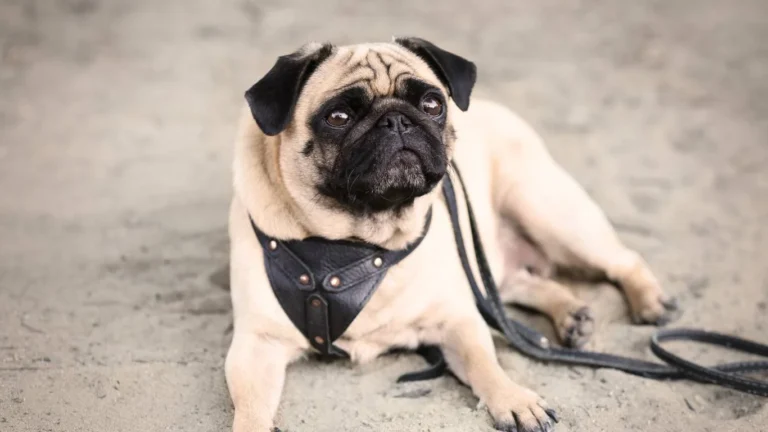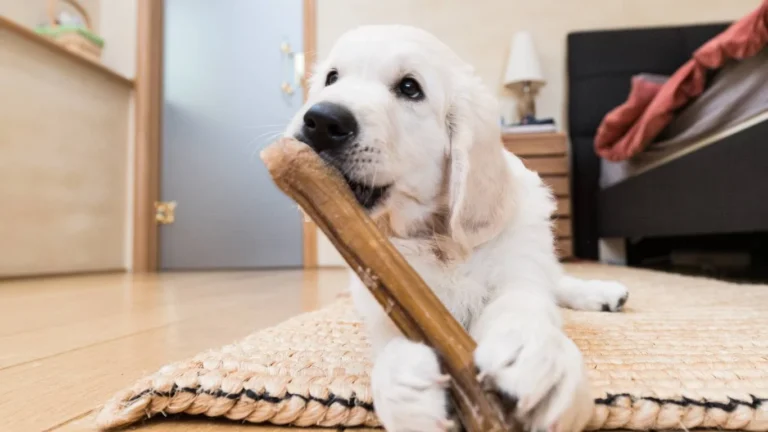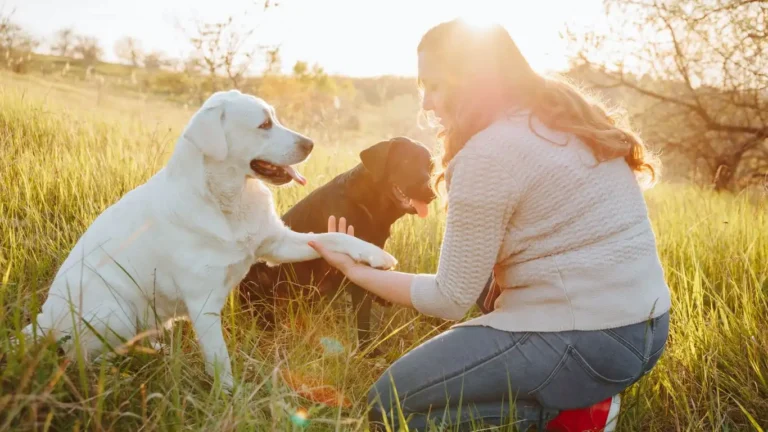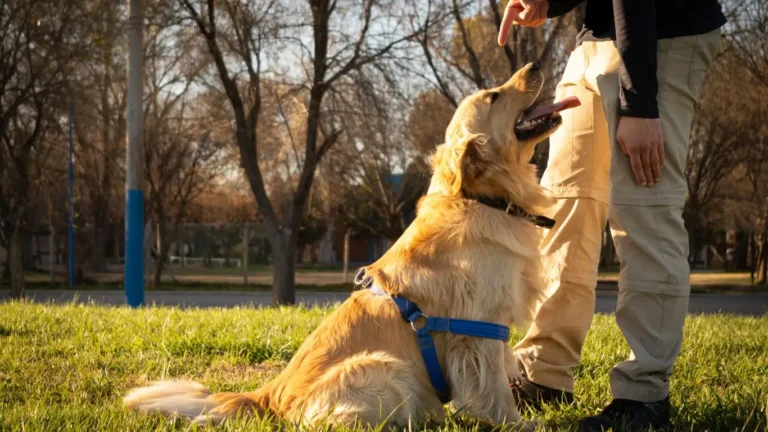Stop Your Dog’s Furniture Chewing – Easy Training That Works!
Dealing with a dog that constantly chews on your furniture can be frustrating, but don’t worry—you’re not alone! Learning how to train a dog to stop biting furniture is a challenge many pet owners face, especially with young puppies or newly adopted dogs. As a Certified Professional Dog Trainer – Knowledge Assessed (CPDT-KA), I’ve worked with countless dog owners struggling with destructive chewing. Good news? With patience, consistency, and the right techniques, you can redirect your pup’s behavior and save your couch from those tiny teeth!
Why Do Dogs Bite and Chew on Furniture?
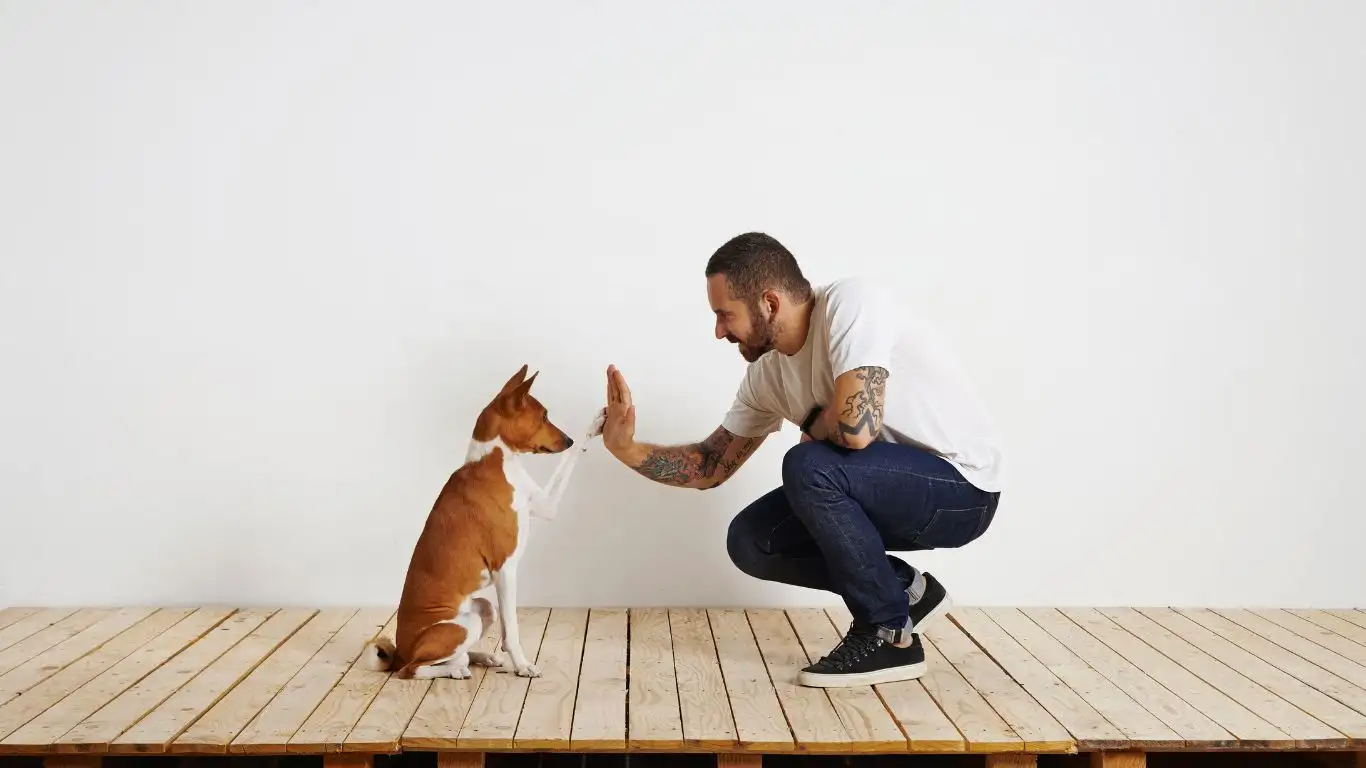
Before you can stop the behavior, it’s crucial to understand why your dog is chewing on furniture in the first place. Chewing is a completely normal and natural behavior for dogs, but sometimes it becomes destructive. Here are some common reasons:
- Teething (Puppies) – Just like human babies, puppies go through a teething phase where chewing helps soothe sore gums.
- Boredom – Dogs left alone for long periods may chew on furniture simply because they have nothing better to do.
- Anxiety or Stress – Separation anxiety or changes in their environment can trigger destructive chewing.
- Lack of Training – If a dog hasn’t been taught what’s appropriate to chew on, they’ll go for whatever is available.
- Hunger or Nutritional Deficiencies – Sometimes, dogs chew on wood or furniture because they lack certain nutrients.
Once you identify the reason behind your dog’s chewing, it becomes much easier to tackle the problem in a way that actually works.
First Steps: Managing the Environment
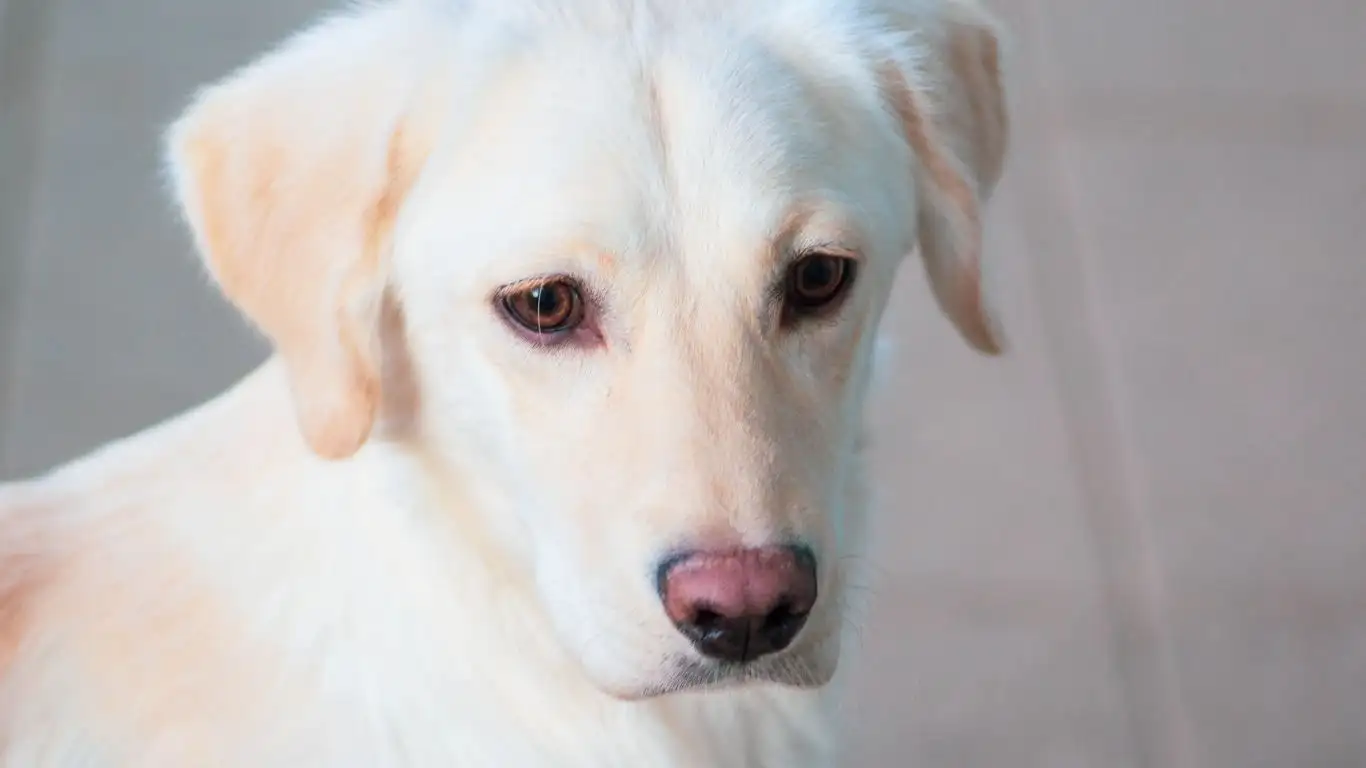
One of the easiest ways to stop a dog from biting furniture is to prevent access to it in the first place. Here’s how to set your home up for success:
Use Barriers and Dog-Proofing Techniques
Dogs can’t chew on what they can’t reach! If your pup has a favorite chewing spot, try blocking access to it with baby gates, playpens, or furniture covers.
Provide Plenty of Chew Toys
Give your dog an acceptable outlet for their chewing needs. High-quality chew toys can make all the difference. Some of my go-to recommendations include:
- Rubber Toys – Durable and great for aggressive chewers.
- Frozen Teething Toys – Perfect for soothing a puppy’s sore gums.
- Edible Chews – Safe, digestible options like bully sticks or dental chews.
Pro tip: Rotate the toys every few days to keep things exciting for your dog.
Apply Taste Deterrents
Some dogs just need a little extra incentive to stop chewing furniture. Bitter apple spray or citrus-based deterrents can make furniture less appealing. Just be sure to test the spray on a small area first to avoid damage to the fabric or wood.
Training Methods to Stop Furniture Chewing
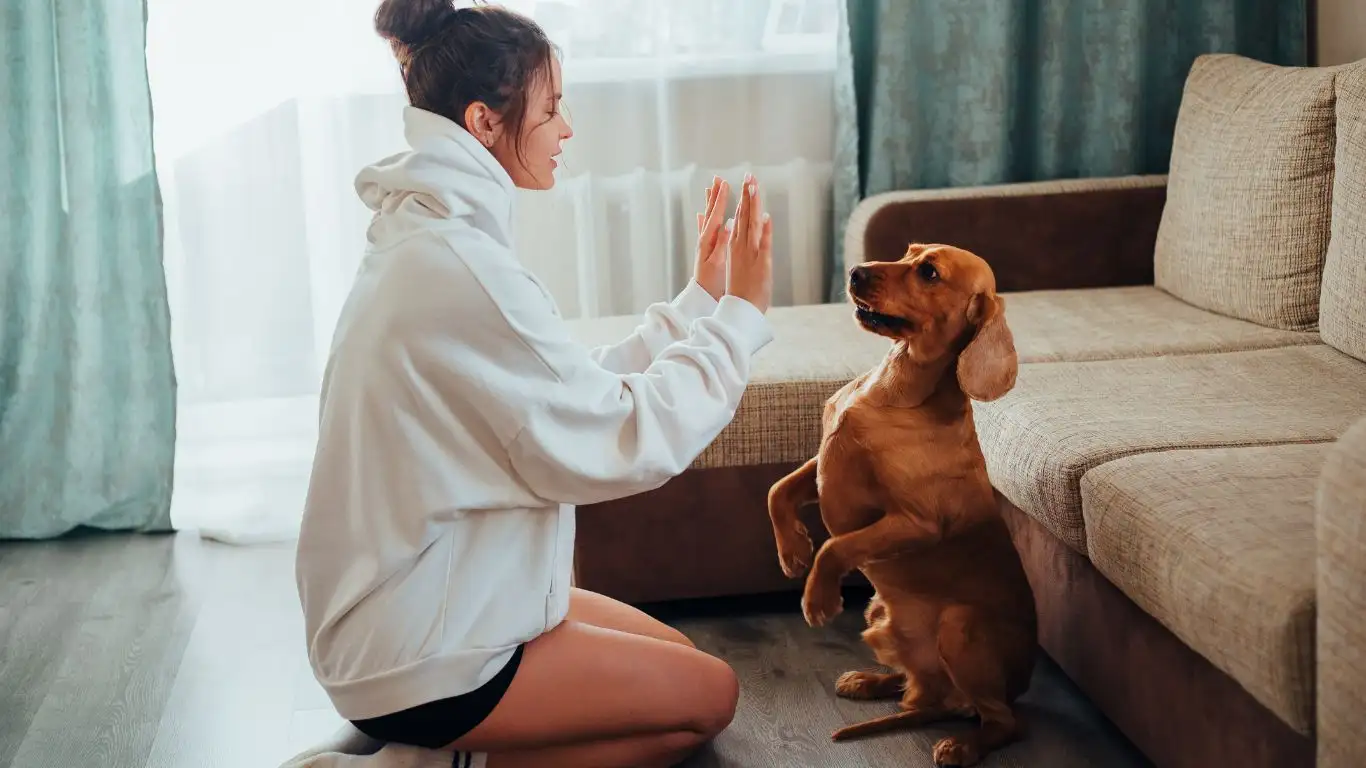
Management is a great first step, but training is where the real magic happens. Teaching your dog what’s acceptable to chew—and what’s not—will lead to long-term success.
Redirect to an Appropriate Chew Item
Every time you catch your dog chewing something off-limits, calmly take the item away and replace it with a designated chew toy. Praise them when they choose the right item! This method is especially useful for puppies who are still learning boundaries.
Use the ‘Leave It’ Command
One of the most effective ways to stop destructive chewing is to teach a solid “Leave it” command. Here’s how:
- Hold a treat in one hand and a chew toy in the other.
- When your dog tries to grab the treat, say “Leave it” and close your hand.
- Wait a few seconds, then offer the chew toy instead.
- As soon as they take the toy, praise and reward them.
With practice, your dog will learn to leave inappropriate items alone and choose the correct option instead.
Positive Reinforcement is Key
Dogs learn best through positive reinforcement. Instead of punishing them for chewing, focus on rewarding good behavior. Every time your dog chews on the right object, give them a treat, praise, or some playtime.
Stay patient and consistent. The more you reinforce good habits, the less likely your dog will be to turn to your furniture for entertainment!
Understanding Your Dog’s Chewing Triggers

By now, you’re probably getting a better handle on how to train a dog to stop biting furniture, but training isn’t just about stopping the behavior—it’s also about understanding what triggers it in the first place. Over the years, I’ve noticed that many owners overlook a crucial factor: a dog’s emotional and physical needs.
Is Your Dog Getting Enough Exercise?
I can’t stress this enough—many destructive behaviors stem from pent-up energy. If your dog isn’t getting enough exercise, they’re going to find their own way to burn off that energy… and that might involve gnawing on your coffee table.
- High-energy breeds (like Border Collies or Huskies) need plenty of physical activity—long walks, runs, or play sessions.
- Low to moderate-energy dogs still need daily exercise but may be satisfied with a few short walks and interactive playtime.
- Puppies have bursts of energy throughout the day, so multiple short play sessions work best.
One of my past clients had a Labrador Retriever who constantly chewed up her wooden furniture. After adding two extra 20-minute play sessions per day, the chewing magically stopped. Why? Because the dog was too tired to bother with chewing anymore!
Mental Stimulation: The Secret Weapon
Dogs need more than just physical exercise. Many breeds crave mental enrichment just as much as they need to stretch their legs. If your dog is chewing out of boredom, try these:
- Food puzzles – These keep dogs busy and make mealtime a fun challenge.
- Snuffle mats – A great way to let your dog use their nose to “hunt” for food.
- Obedience training – Even just five minutes of training can help redirect your dog’s energy.
Once I started incorporating more brain games into my own training sessions, I saw a massive improvement in how engaged dogs became—and destructive chewing reduced dramatically.
Consistency: The Key to Breaking the Habit
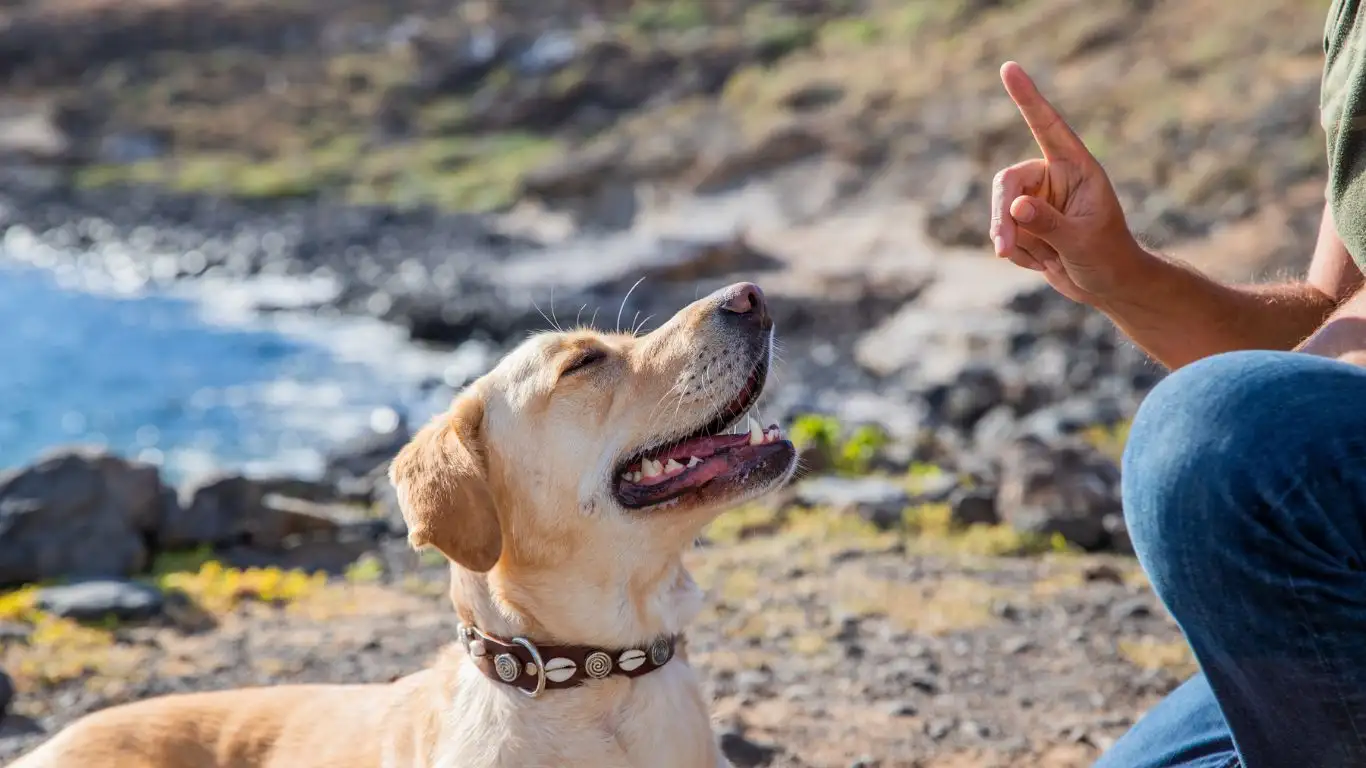
Here’s the thing—no matter how many chew toys you provide or how well you dog-proof your house, training won’t work unless you’re consistent. If your dog is allowed to chew the furniture one day and scolded for it the next, they’ll just get confused.
Reinforce Good Choices Every Time
Every time your dog chooses to chew on an appropriate item instead of the furniture, reward them. This could be with:
- Verbal praise – A cheerful “Good dog!” can go a long way.
- Treats – Reinforce positive behavior with a tasty snack.
- Playtime – A quick tug-of-war game can be an excellent reward.
It’s all about creating a clear pattern: Furniture = no reward, Chew toy = big reward!
Avoid Harsh Punishments
One of the biggest mistakes I see dog owners make is punishing after the fact. If you come home to find your dog has chewed up your couch, scolding them won’t help. Dogs live in the moment, and unless you catch them in the act, they won’t understand what they did wrong.
Instead, use positive reinforcement to show them what they should do. If you do catch them chewing, calmly redirect them to a chew toy and reward them for choosing the correct item.
Using Training Sessions to Curb Furniture Chewing

Training sessions don’t have to be long or complicated, but they do need to be effective. Here’s a simple approach to training your dog to stop chewing furniture.
Step-by-Step Training Guide
- Set up a controlled environment. Place an item your dog likes to chew on (a couch cushion, for example) in the room.
- Introduce a high-value chew toy. Offer your dog a toy they love, such as a stuffed Kong or a bully stick.
- Use a clear command. If your dog approaches the furniture, say “Leave it” and immediately redirect them to the chew toy.
- Reward instantly. The moment they choose the chew toy, praise and give them a treat.
- Repeat multiple times daily. The more they practice, the faster they’ll learn.
Through repetition and consistency, your dog will begin to associate furniture with “off-limits” and toys with “approved chewing.”
Training Tip: Increase Difficulty Gradually
Once your dog understands the basics, challenge them a bit more. Try placing their favorite chew toy next to the furniture and see if they can resist. If they do, reward them generously! This strengthens their impulse control and helps reinforce the behavior long-term.
When to Seek Professional Help
Sometimes, even with the best training methods, a dog’s chewing habit persists. If your dog is excessively destructive despite exercise, training, and environmental changes, it might be time to consult a professional.
Signs You Might Need Extra Help
- Your dog chews aggressively and destroys furniture daily.
- They show signs of severe anxiety (whining, pacing, drooling excessively when alone).
- Training efforts haven’t made any progress after several weeks.
Working with a certified dog trainer or veterinary behaviorist can provide a customized plan for your dog’s specific needs. In some cases, underlying medical issues (like dental pain or digestive problems) may contribute to excessive chewing.
As a CPDT-KA, I’ve worked with many cases where dogs needed additional guidance beyond basic training, and once we addressed their underlying triggers, their chewing problems improved significantly.
Advanced Training Techniques to Prevent Chewing
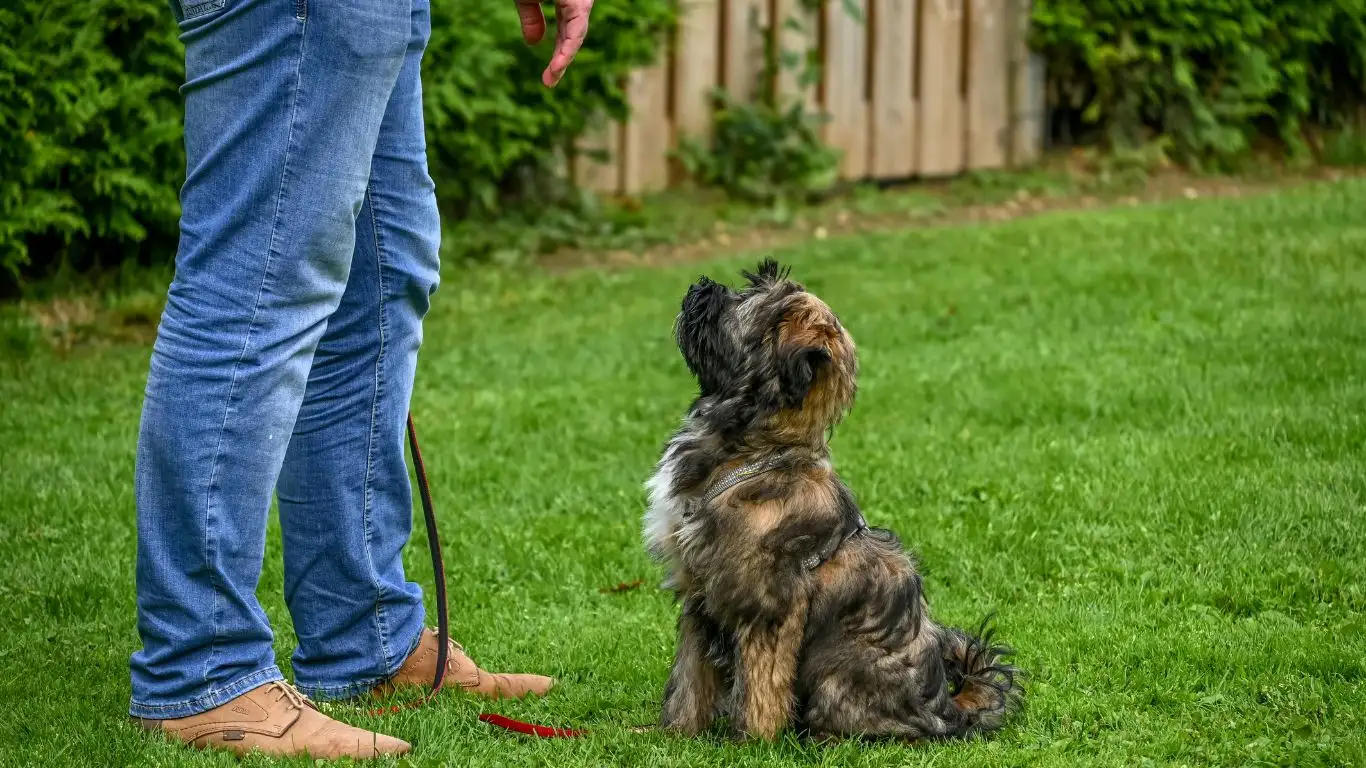
By now, you’ve learned how to manage your environment, provide proper chew alternatives, and reinforce good behavior. But what if your dog is still sneaking in a furniture chew session when you’re not looking? Sometimes, adding a few advanced training techniques can make all the difference in teaching how to train a dog to stop biting furniture permanently.
Impulse Control Training
Impulse control is crucial for preventing destructive chewing. Dogs with good self-control are less likely to act on urges like gnawing on the legs of your dining room table. Try these exercises:
- The “Wait” Command – Teach your dog to wait before grabbing treats, toys, or even their food bowl.
- Delayed Reward System – Instead of immediately rewarding good behavior, make your dog work for it a little longer each time.
- Structured Playtime – Games like fetch and tug can be used to reinforce listening skills and patience.
One of my clients had a Beagle who couldn’t resist chewing up chair legs. After a few weeks of impulse control training, he learned to pause and wait for permission before grabbing anything. This small shift made a huge difference in reducing furniture destruction.
Crate Training for When You’re Away
If your dog tends to chew furniture when left alone, crate training can be a lifesaver. Contrary to some misconceptions, a properly introduced crate is not a punishment—it’s a safe space where your dog can relax without getting into trouble.
Here’s how to make crate time a positive experience:
- Choose the right size crate – Your dog should have enough room to stand, turn around, and lie down comfortably.
- Use soft bedding and safe toys – This helps them feel cozy and entertained.
- Make it rewarding – Give treats when they enter the crate voluntarily.
- Start slowly – Begin with short intervals and gradually extend crate time.
When done correctly, crate training helps prevent destructive chewing by ensuring your dog isn’t left unsupervised in temptation-filled areas.
Home Remedies to Deter Chewing
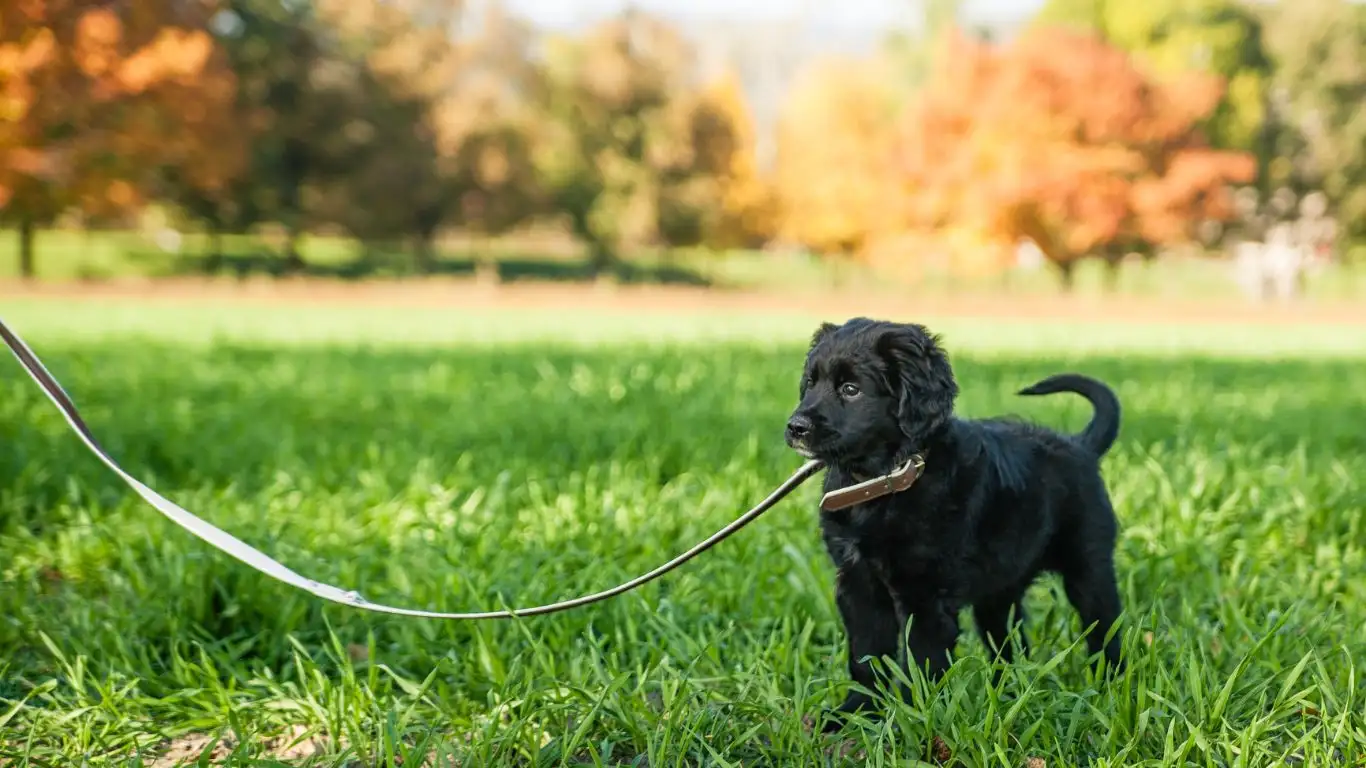
Sometimes, a little extra reinforcement can help your dog kick the chewing habit. If you’re looking for natural ways to make furniture less appealing, try these home remedies:
DIY Bitter Spray
Commercial bitter sprays work well, but you can also make your own deterrent with common household items:
- Mix equal parts white vinegar and apple cider vinegar.
- Add a few drops of lemon juice for extra bitterness.
- Spray a small amount on furniture (test on an inconspicuous area first).
Dogs usually dislike the taste, making them less likely to chew on treated surfaces.
Citrus Peels & Essential Oils
Many dogs dislike citrus scents. Placing orange or lemon peels near furniture legs can sometimes deter chewing. You can also mix a few drops of orange essential oil with water and lightly spray it on the areas your dog targets.
Redirection with Frozen Treats
If your dog chews due to teething or stress, freezing a wet washcloth or stuffing a Kong toy with frozen peanut butter can work wonders. The cold sensation soothes their gums and gives them something satisfying to chew.
How Long Does It Take to Break the Habit?
There’s no magic overnight fix for chewing—breaking the habit takes time and patience. Based on my experience, here’s a general timeline of what you can expect:
| Training Stage | Estimated Timeframe |
|---|---|
| Redirecting to chew toys | 1-2 weeks |
| Teaching “Leave It” | 2-4 weeks |
| Building impulse control | 4-6 weeks |
| Eliminating furniture chewing entirely | 1-3 months |
Every dog learns at their own pace, so don’t get discouraged if progress is slow at first. Stay consistent, and you’ll start seeing improvement over time!
Final Thoughts
Training your dog to stop chewing furniture isn’t about punishment—it’s about guiding them toward better choices. By using a combination of management, redirection, training, and positive reinforcement, you’ll not only protect your home but also strengthen your bond with your furry friend.
Remember, patience and consistency are your best tools. Keep working with your pup, celebrate small victories, and soon enough, those chewed-up couch cushions will be a thing of the past!
References
- ASPCA – Dog Behavior Resources
- American Kennel Club – Puppy Training Tips
- The Humane Society – Preventing Destructive Chewing
Disclaimer
The content in this article is for informational purposes only and is not intended to replace professional veterinary or behavioral advice. If your dog’s chewing behavior is extreme or linked to anxiety, consult a certified dog trainer or veterinarian for tailored guidance.

